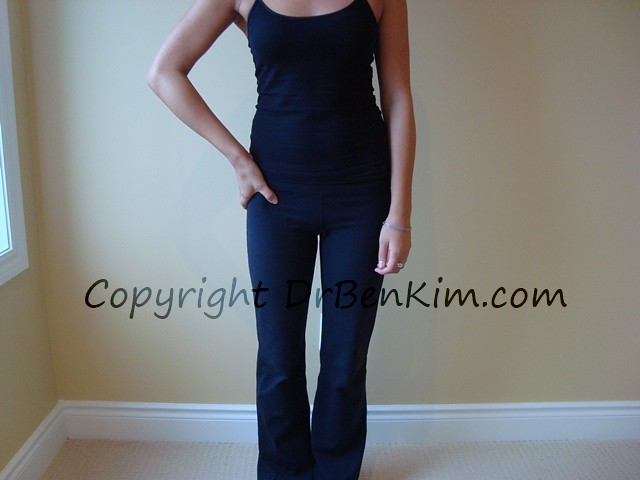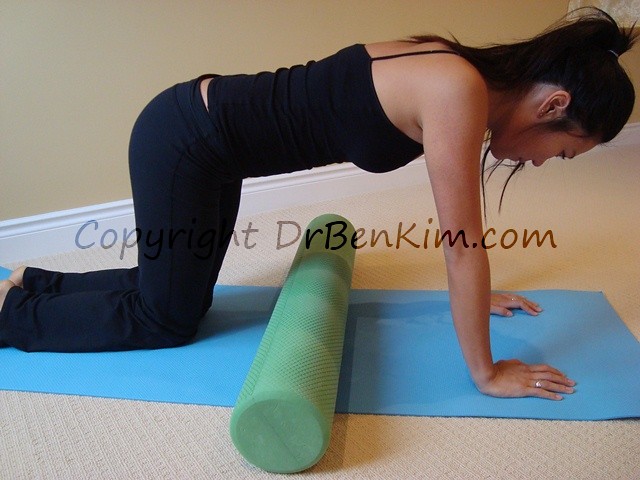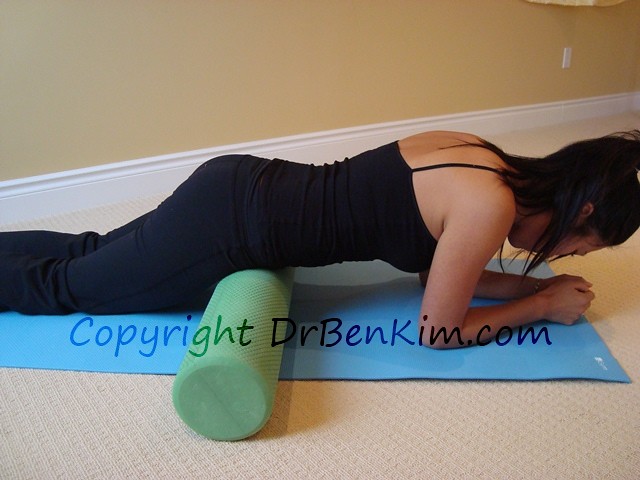You are here
How to Keep Your Hip Flexors Healthy
 If you have tight hip flexors, you can expect to have problems with your hip joints and lower back, if not now, then almost certainly at some point in the future.
If you have tight hip flexors, you can expect to have problems with your hip joints and lower back, if not now, then almost certainly at some point in the future.
Your hip flexors are a group of muscles that enable you to bring your knee up towards your trunk. Though several muscles contribute to this action, the two primary players are your iliacus and psoas major, which come together to form the extremely strong ilipsoas tendon, which attaches your hip flexor muscles to your thigh bone.

Short hip flexors can create compensatory changes in the way that the joints, muscles, and ligaments in your pelvis and lower back function. These changes can lead to intermittent or chronic sprains and strains.
Most notable among the changes that can occur with tight hip flexors is tightening of the dense, ligamentous capsule that protects the ball and socket hip joint. Such tightening is often mistaken for ligamentous tears that can cause severe pain and limited movement of the hip joint.
To reverse or prevent shortening of hip flexors, I encourage most of my clients to try foam rolling on this area daily. It's simple to do, highly effective at improving blood flow and muscle length, and feels great once you get used to it.
How to Stretch and Massage Your Hip Flexors with a Foam Roller
As you're lying on your back with your legs flat on the ground, locate the bony prominence of your pelvis on either side - this is called your anterior superior iliac spine (ASIS).
Just below your ASIS, you'll find a dense stretch of muscle, about the size of your palm. Use your fingers or thumb to apply a little pressure on this area to familiarize yourself with the approximate borders of the main muscle bellies that you'll be targeting with your foam roller. This area is typically tender or ticklish to palpation.
Below, my cousin Sharon has her thumb right over the center of the target area:
Support yourself on your hands and knees with your foam roller positioned below your hips.
Now lower yourself until your hip flexor region is lying on the foam roller - you can find the right balance between how much weight you apply to the foam roller and how much of your weight is supported by your arms and legs. You want to feel a deep massage-like pressure in your hip flexors, but you don't want to experience significant pain. As your hip flexors improve in length and health, you should be able to increase the amount of pressure you use.
You'll want to roll on just one side at a time - because your hip flexors are located slightly towards the outer part of your pelvic region, it's not possible to experience an effective roll on both sides at the same time.
As you're rolling up and down on your hip flexors, you should try to rotate your body just a smidge from right to left to access the full width of this area.
Roll as many times as is comfortable, and use as much of your body weight as is comfortable. Maintain steady breathing the entire time, and alternate from side to side.
The first time you foam roll your hip flexor region, you may want to pass over the area just a few times, as the muscles in this region are typically quite taut and tender to pressure. After a week or two of regular rolling, you'll find that you can increase the amount of pressure you use and even go several minutes at a time.
Beyond ensuring that your hip flexors stay healthy, foam rolling this area can also help mobilize your ball and socket hip joints and the dense ligamentous capsule that surrounds these joints.
Also, as you move up and down on the foam roller while supporting yourself on your hands and legs, you'll experience a good workout of your core region, which is forced to stabilize itself while you target your hip flexors.
Here's a brief video clip that illustrates foam rolling of the hip flexor region:
As mentioned in my post on how to foam roll your groin area, if your muscles are quite tender and you find a foam roller to be too firm, you can start with a jumbo tennis ball or a volleyball, which provide a more forgiving amount of therapeutic pressure.
If you don't have a foam roller and are looking to invest in one that offers a blend of comfort, durability, and ideal density to provide therapeutic rolling of your muscles and ligaments, please feel free to have a look at the one that I had custom made for our clients here:
For a DVD that presents still photos and video clips that illustrate how to take your body through all of the major stretches and foam rolling exercises you can do to keep your body as healthy as your genetics will allow, have a look here:
Stretching and Foam Rolling DVD, by Sharon Lee and Dr. Ben Kim
In subsequent posts, we'll take a look at how to foam roll other areas of your pelvis and lower extremities.
Please note that it's always advisable to receive permission from your physician before you begin using a foam roller.
Join more than 80,000 readers worldwide who receive Dr. Ben Kim's free newsletter
Receive simple suggestions to measurably improve your health and mobility, plus alerts on specials and giveaways at our catalogue
Please Rate This
Highest Rated | Related Posts | ||















Comments
foam roller hip joint and thigh exercises
Dr Kim: great information and thank you!! I've had right and left hip joint replacements 2 years ago. Feel some tightening again around joint.
Is it okay to use these stretching exercises with foam roller? There were certain restrictions after surgery, but time for those(don't cross midline, don't elevate hip joint higher than knee) is past. Any recommendations re use of foam roller post surgical recovery????? thank you. Love your site. Read it every time and send many on to my friends and adult children.
Thank you
Dr. Kim,
Thank you for posting this. I am a massage therapist and I always talk to my clients about foam rolling and this discussion and video is perfect. I will be sure to share!
Blessings
Tammy